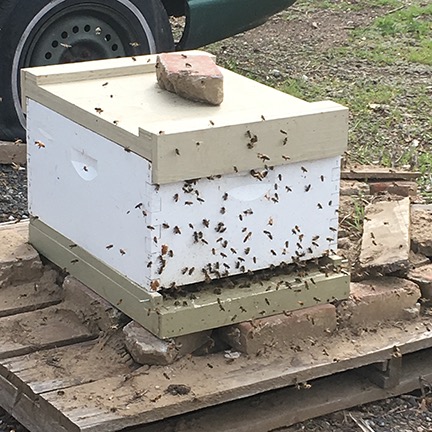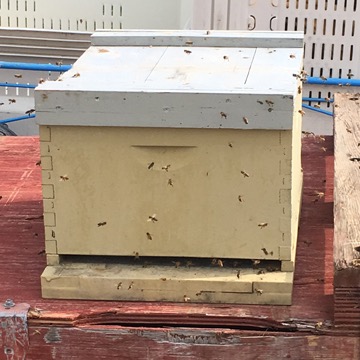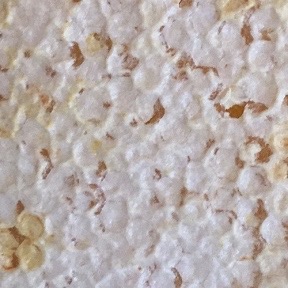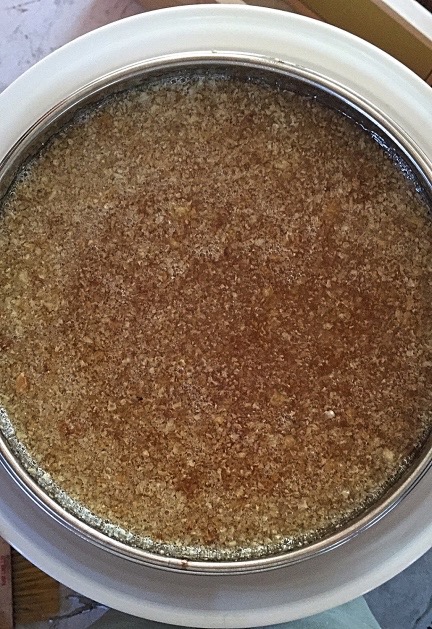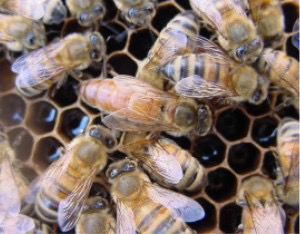What you find on the home page varies depending on the time of year.
A few months ago, I was thinking about how I never blog about flying anymore. But a quick look at the home page and you’d think that flying is the only thing I blog about. What gives?
I realized that my blogging habits are seasonal.

I managed to get one trip in before cherry season started: I took the helicopter down to Oregon for some maintenance and spent some time on the cloudy coast with my pups.In the winter, when I’m traveling and have limited access to the Internet, I often share quick “postcards” that feature photos of places I’ve been. Occasionally, I’ll do a deep dive into a topic on my mind that time of year. In recent years, I’ve been making and selling jewelry on my travels so I write about doing shows, finding supplies, and learning new techniques.
- In the spring, after I’ve returned home, I write about springtime topics. Although I love traveling, after 3+ months on the road, I’m usually very glad to be home. I write about the remnants of winter, the weather, and the chores I need to do to get my garden and home ready for the time of year when I’m there.

One of the things I’m excited about lately is the GoPro Fusion camera I recently acquired. It makes interactive 360° videos, which have been a real hit on FlyingMAir YouTube channel. Here’s a screen grab from a recent video — isn’t this a cool angle?In the summer, when cherry drying season is underway, I write a lot about helicopters and flying. After all, that’s what’s on my mind. I also dial up my video production for the FlyingMAir YouTube channel, which is quickly becoming a decent source of revenue to help cover my flying costs. Flying helicopters ain’t cheap and I occasionally whine a bit about that, too. I might also write about new cameras or video editing tools I use to get that work done.
- In autumn, when cherry season is over and no longer have to stick around the house waiting for rain, I eventually hit the road on some sort of autumn vacation. Last year I did a photography cruise in the San Juan Islands, but this year the plan is to go to Alaska; I already got a good deal on First Class plane tickets to get there. When I’m not traveling, I’m prepping my home and garden for the winter and starting to pack for my winter travels, so I sometimes blog about that.
Keep in mind that the busier I am, the less I write in my blog. Sometimes I’m very busy. Other times, I might not be especially busy but I could simply be burned out. Remember, I’ve been blogging here since October 2003 — getting close to 20 years now! Maybe I’m just running out of things to say.

Here’s a morel mushroom I found in mid-May. I hunt for morels in spring and chanterelles in autumn.
I think I blog less now than I did years ago because I’m more active now than I was earlier in my life. I have freedoms now that I didn’t have when I was with my wasband, a man who had limited vacation time and didn’t like me having fun without him. I also have a lot more personal time to learn new things (for example, beekeeping in 2013, gyro piloting in 2014, mushroom hunting in 2016, jewelry making in 2018 and 2019) and build new skills (for example, basic carpentry in 2014; acting as the general contractor on the construction of my home, wiring my home and tiling my bathroom floor and shower stall wall in 2014 and 2015; jewelry scale metalworking in 2018). I do as I please and I do a lot. Who has time to blog?
What does all this mean to blog readers? Well, all it really means is that this blog’s focus will shift with the seasons. It’s summer now, so I’ll be writing a lot about flying and sharing lots of my videos. If the virus situation improves, I hope to get out to do at least one or two jewelry shows and I’ll likely write about that. And, keeping this in mind, I’ll do my best to write about things other than flying when they’re on my mind.
You might even get another political rant out of me. 😉



